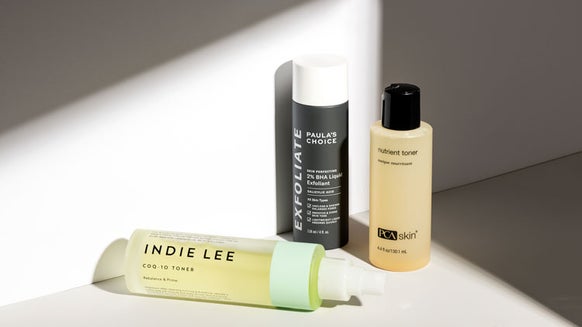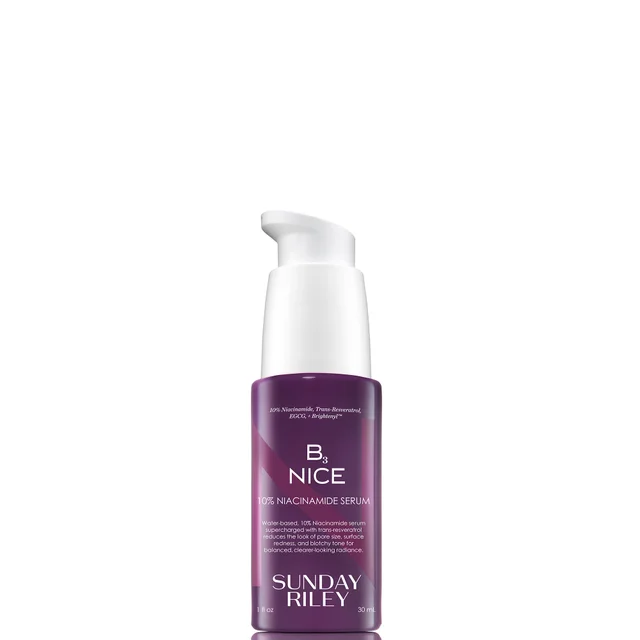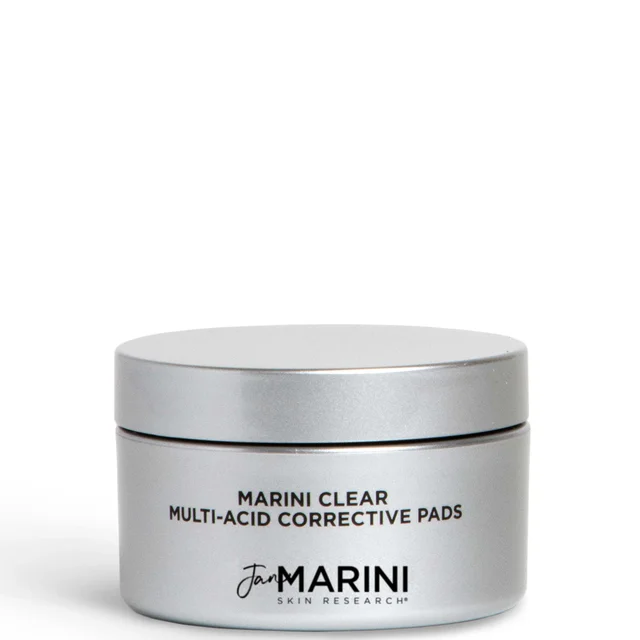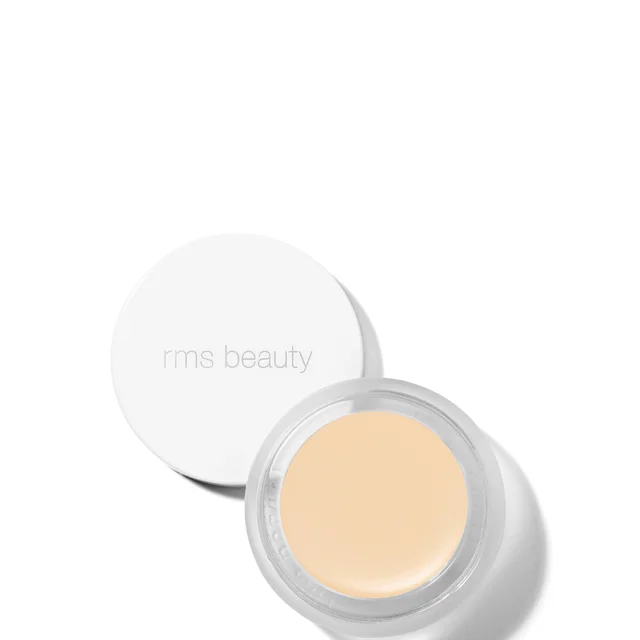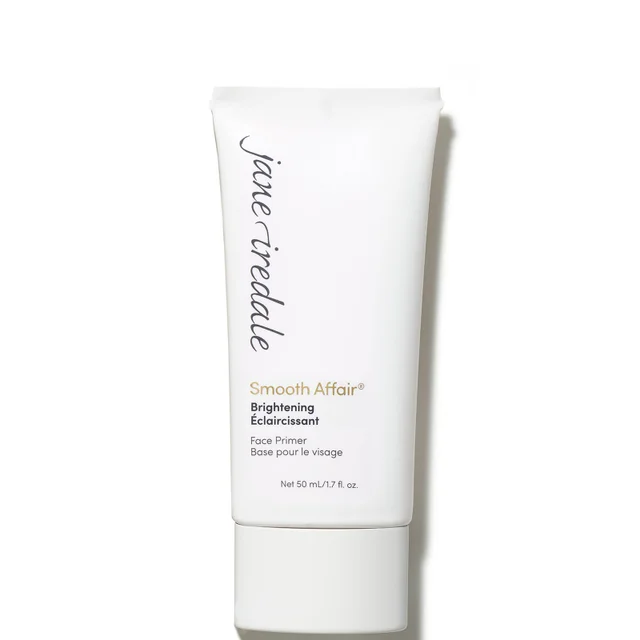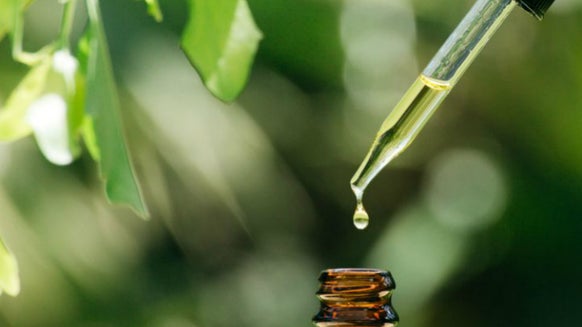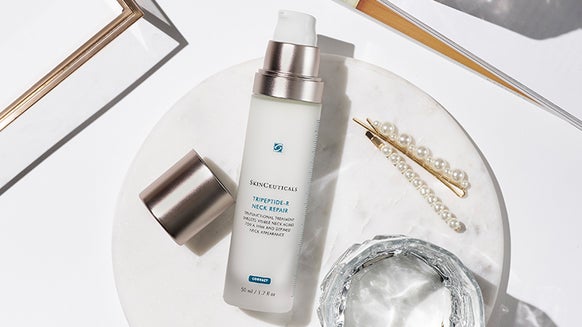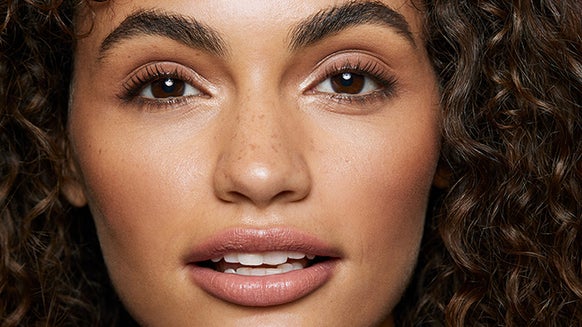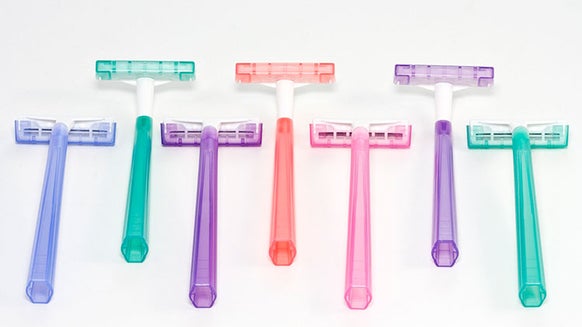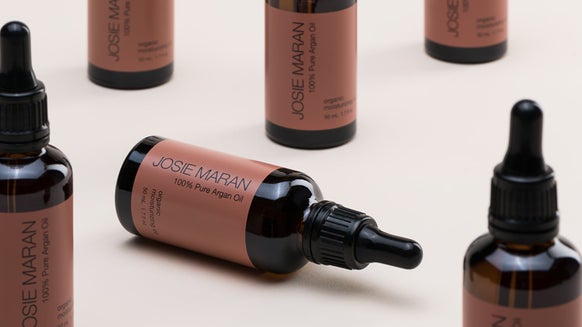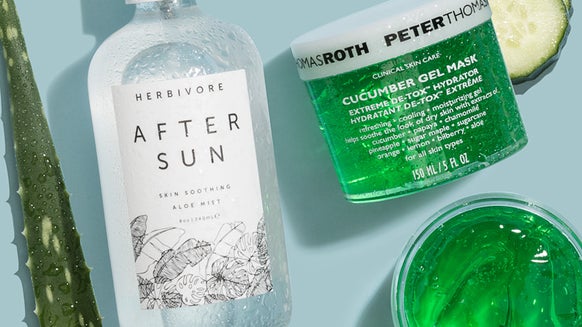How to Get Rid of Dark Spots, A Derm Explains All
No matter how hard you try to keep your skin completely spot-free, chances are, from time to time, dark spots will crop up. As annoying as they may be, there are tried-and-true solutions and many skincare products that work wonders for evening out the complexion. According to dermatologist Dr. Connie Yang, MD, dark spots are areas of skin that appear darker than the surrounding skin, caused by increased pigment. Caused by an overproduction of melanin, which is really nothing more than the body's way of naturally protecting it from the sun and inflammation, dark spots cause zero harm to your skin. Still, if you want to know how to get rid of dark spots so that your skin is more evenly toned, consider this your ultimate guide for eliminating discoloration and spots for good.
Meet the Expert
Dr. Connie Yang - Board-certified dermatologist, fellow of the American Academy of Dermatology, and member of Dermstore’s Medical Advisory Board
What Are the Types of Pigmentation?
Several different types of pigmentation can occur on the skin. Commonly known as hyperpigmentation, when an area of the skin creates more melanin than others, the skin becomes darker in tone. Anything from a pimple, increased hormone levels, sun damage to a cut and even a burn, bug bite, certain medications, surgery, or any other type of trauma that causes some degree of inflammation within the skin can lead to pigmentation increases and, therefore, dark spots.
Age and sunspots, also known as liver spots or solar lentigines, are among the more common types of pigmentation. Dr. Yang says sun spots occur due to UV damage and typically occur in sun-exposed areas like the face, chest, shoulders, and hands. These dark spots appear brown, tan, or black and tend to appear over time due to repeated sun exposure. For the most part, age spots are usually more prominent in older adults with years of sun exposure.
Post-inflammatory hyperpigmentation (PIH) is another cause of dark spots on the skin. "Post-inflammatory hyperpigmentation is caused by trauma to the skin. This can include acne lesions, cuts, or rashes like eczema. The skin produces excess pigment in response to inflammation or injury," Dr. Yang says.
Sun damage and the dark spots it produces also fall under the dark spot category. Sun damage-related dark spots are usually seen on the face, arms, and legs but can occur anywhere on the body. With sun damage spots, even just a little time in the sun can cause them to form.
When devising a skincare plan to get rid of dark spots, it's important to understand the type of pigment. You must develop a plan of attack to help brighten and lighten bothersome discoloration.
Key Ingredients to Treat Dark Spots
When it comes to how to get rid of dark spots safely and effectively, there are a handful of proven skincare ingredients found in over-the-counter products that help to break down stubborn pigmentation to reveal an even brighter complexion. "For dark spots, I often recommend using targeted active ingredients like vitamin C, retinol, azelaic acid, and niacinamide in conjunction with daily SPF," says Dr. Yang. "It's important to protect the skin from the sun. Otherwise, the pigment will take longer to fade or return despite your use of the actives."
Retinol: This vitamin A-derived ingredient speeds up the skin cell turnover rate to help reduce the appearance of dark spots. Available in serums, creams, gels, and lotions, using retinol at night only also helps inhibit tyrosinase, an enzyme that is part of the melanin production cycle. "It also helps shed damaged, pigmented skin more rapidly to reveal fresh, evenly toned skin," Dr. Yang says. Vitamin C: Like retinol, antioxidant-rich vitamin C also helps prevent tyrosinase production while brightening the skin and lightening dark spots so that they gradually fade. "It also helps prevent free radical damage, which can contribute to dark spot formation, while decreasing pigment production, evening out skin tone, and brightening the skin," Dr. Yang says. Glycolic acid: Part of the alpha hydroxy acid (AHA) family of acids, glycolic acid physically breaks down the bonds between dead skin cells so that the damaged and darkened cells are exfoliated away Niacinamide: Also known as vitamin B3, Dr. Yang shares that while niacinamide has numerous skin benefits, it helps with dark spots by inhibiting the transfer of pigment from melanocytes (pigment-producing cells) to keratinocytes (skin cells). Azelaic acid: Commonly recommended to help control rosacea and acne, azelaic acid also blocks melanin production while providing an anti-inflammatory and exfoliating effect for brighter-looking skin. "It is an excellent ingredient for dark spots because it works by blocking the enzyme responsible for pigment production," explains Dr. Yang.
What Causes Dark Spots?
Simply put, dark spots on the skin are caused by an overproduction of melanin, the substance that gives the skin its color. Darker skin tones naturally contain more melanin than lighter skin tones, hence the darker coloration of the skin. But when the skin incurs trauma and responds with inflammation to protect itself, more than normal amounts of pigment are produced as a byproduct, leading to stubborn dark spots.
Sun exposure, acne, fluctuating hormone levels, certain medications, irritation, skin conditions, and even rashes and cuts can all signal an overproduction of melanin and, therefore, dark spots. All these factors trigger an increased response of melanin production, eventually leading to the formation of dark spots on the skin's surface.
Are Certain Types of Dark Spots Easier to Get Rid of?
When it comes to how to get rid of dark spots effectively, it's important to know that it's going to take time, patience and a lot of effort to lighten them. Some dark spots, like sun and age spots, may be more responsive to certain brightening ingredients than others. "Dark spots caused by small injuries, like pimples, are easier to get rid of than sunspots or melasma because they tend to be more superficial," Dr. Yang says. That's why developing and following an effective skincare routine that targets the type of dark spots, while preventing new ones from forming, is key.
How to Effectively Get Rid of Dark Spots
Sun Damage and Age Spots
If you want to know how to get rid of dark spots caused by sun exposure, the best approach is to take a multi-prong approach and incorporate a few different dark spot-eliminating ingredients into your routine, such as retinol, glycolic acid, and vitamin C.
iS Clinical Pro-Heal Serum Advance Plus
Powered by vitamins, natural extracts and vitamin C, this healing serum helps heal skin affected by discoloration while reducing inflammation and providing nourishment to improve the skin’s health, texture and tone.
Key Ingredients: Vitamins A, C, E, olive leaf extract
Skin Type: All Skin Types
Skin Benefits: Helps revitalize skin vibrancy, acts as an antioxidant to protect the skin against environmental stressors and free radical damage, reduces the appearance of redness and irritation while providing a calming and soothing effect
Beauty Insider Tip: Since the serum offers a super high level of antioxidant protection, it is ideal for use on even the most sensitive, compromised and sickly skin types.
Allies of Skin Tranexamic and Arbutin Advanced Brightening Serum
This supercharged serum is the perfect daily serum to brighten dark spots without any exfoliation. It creates a healthy glow for a lit-from-within look. Thanks to adaptogens, including mushrooms, skin becomes more resilient and stronger over the long term while also helping to improve the common signs of aging.
Key Ingredients: Mushroom, niacinamide, tranexamic acid, alpha arbutin, peptides, licorice root extract
Skin Type: All Skin Types
Skin Benefits: Promotes stronger skin, leaves skin looking luminous and with a dewy finish, improves and prevents the appearance of discoloration
Beauty Insider Tip: To further enhance the effects of your favorite in-office skin brightening treatments, such as peels and non-ablative lasers, use the brightening serum in conjunction with them.
Acne and Post-Inflammatory Hyperpigmentation (PIH)
Lingering spots of what was once acne can sometimes be more challenging to erase depending on how deep-rooted the breakout was and how much inflammation the skin incurred. Niacinamide and retinol are go-to skin brighteners, as are exfoliating acids, which help to lift away the discolored, damaged skin cells. When treating dark acne spots and the resulting PIH that's left behind, be patient since they can take some time to lighten up and may need to be aired with professional chemical peels for the best results.
Sunday Riley Be Nice 10% Niacinamide Serum
Thanks to an advanced version of niacinamide, this post-breakout dark spot-reducing serum also helps to improve the look of pores and redness, giving way to a more radiant-looking complexion. This makes it an ideal formulation for all skin types and ages.
Key Ingredients: Niacinamide, Brightenyl, trans-resveratrol, EGCG
Skin Type: All Skin Types
Skin Benefits: Reduces post-acne dark spots, improves oiliness, reduces redness and wrinkles and pore size
Beauty Insider Tip: This specially designed serum, which took two years to develop, was inspired by Sunday Riley's daughter, who dealt with acne scars and post-acne dark spots.
Jan Marini Marini Clear MultiAcid Corrective Pads
Send post-acne dark spots packing with these skin-refining face pads, which help clear up blemish-prone skin. Formulated with skin-friendly acids and niacinamide, these brightening pads clear out clogged pores and reduce redness and discoloration on the skin for a more evenly toned, healthier-looking complexion.
Key Ingredients: Salicylic, glycolic and azelaic acids, niacinamide
Skin Type: Oily and acneic skin
Skin Benefits: Clears pores and polishes skin, helps minimize the look of redness and discoloration
Beauty Insider Tip: To use the pads correctly, wait 10 to 15 minutes after swiping one onto the skin before removing it with warm water and a washcloth, and always wait two days between each use.
For a More Even Skin Tone
While makeup itself won't do much to get rid of dark spots (unless the formulation is packed with skin-brightening ingredients), good makeup can conceal discoloration for more even-looking skin.
RMS Beauty Un Cover-Up Concealer
Consider this light cream concealer as the ultimate cover-up for dark spots. With its flawless finish and buildable coverage, the long-wear makeup softens and hydrates the skin while letting the skin's natural beauty shine through.
Key Ingredients: Organic coconut and jojoba oils
Skin Type: All Skin Types
Skin Benefits: Covers up imperfections to reveal flawless-looking skin, hydrates
Beauty Insider Tip: Each shade will adjust to your skin tone due to the mineral pigments in the formulation.
Related Article: An Honest RMS Beauty Review, Tested and Approved By Our Esthetician
jane iredale Smooth Affair Brightening Face Primer
When it comes to covering up dark spots so that your makeup doesn't budge throughout the day, a good makeup primer is a must. This one smooths out the skin, giving it a luminous glow while refining and prepping the skin for a face makeup that lasts for hours at maximum coverage capabilities.
Key Ingredients: Apple extract, royal jelly, algae extract
Skin Type: All Skin Types
Skin Benefits: Preps the skin so makeup goes on easily and lasts longer, hydrates, smoothes, brightens, nourishes, minimizes the appearance of pores, reduces the appearance of wrinkles
Beauty Insider Tip: The primer can also be worn on the eyelids and around the eye area to help give eye makeup greater staying power
FAQs
Can Scarring Cause Dark Spots?
While scars and dark spots are often thought to be the same, the two are quite different, but that doesn't mean that scarring can't cause dark spots because it can. Dr. Yang says that any trauma to the skin has the potential to cause dark spots. Physical scarring often leads to pitted or depressed skin that can also show signs of more pigmentation and discoloration due to inflammation within the skin. It's also normal for scarring to leave behind some darkness in the skin, which is part of the normal wound-healing process. Excess melanin can remain in the area, but for the most part, it tends to gradually lighten on its own as the skin heals, although it may not return to the exact shade of your skin tone without a bit of help from the right skincare ingredients and treatments.
Are There Skin Care Devices That Can Brighten Dark Spots?
The Bottom Line
Dealing with stubborn dark spots can seem like an uphill battle, but you can erase your dark spots with the right skincare plan that consists of skin-brightening ingredients and in-office treatments. However, when it comes to how to get rid of dark spots the right way, you'll need to be super diligent with your skincare routine and patient, too. Remember, these spots didn't form overnight, and they won't disappear that fast. But with the right skincare protocol on hand, they can fade away once and for all.

Elise Minton Tabin is an award-winning beauty journalist, editor, and beauty expert with more than 16 years of experience. She previously held the title of Executive Beauty Editor at NewBeauty magazine, where she reported on beauty, plastic surgery, anti-aging, health and wellness. She was also instrumental in the launch of the beauty supplement brand Hush & Hush. A self-professed beauty junkie and retinol and sunscreen pusher, Elise knows what’s new, what works and who’s the best to go for every procedure under the sun. Follow Elise on Facebook, Instagram, and on her beauty blog, elisetabin.com
Related Posts

I Tried a 3-Day Juice Cleanse to Clear Up My Skin, Here’s What Happened
